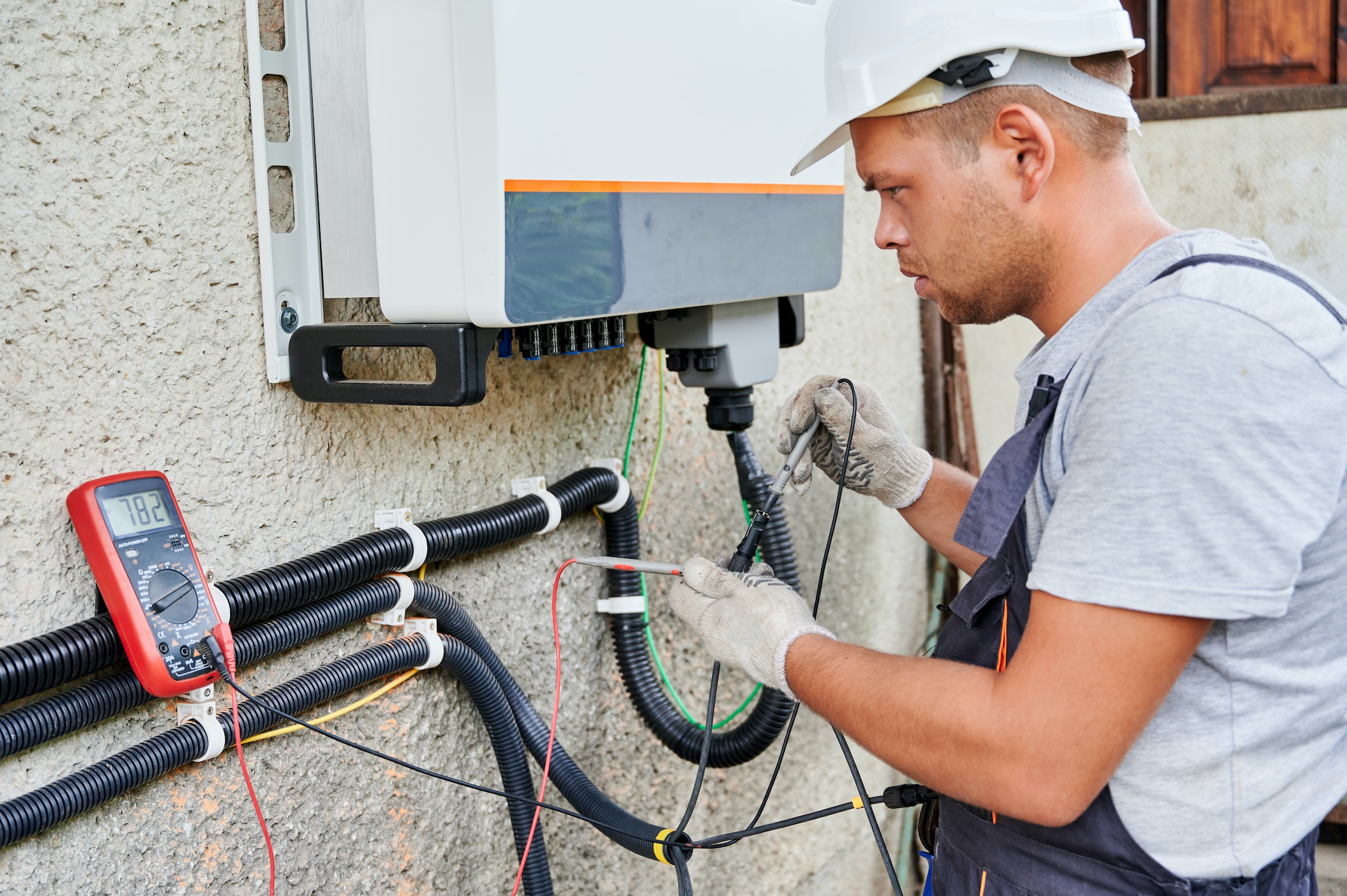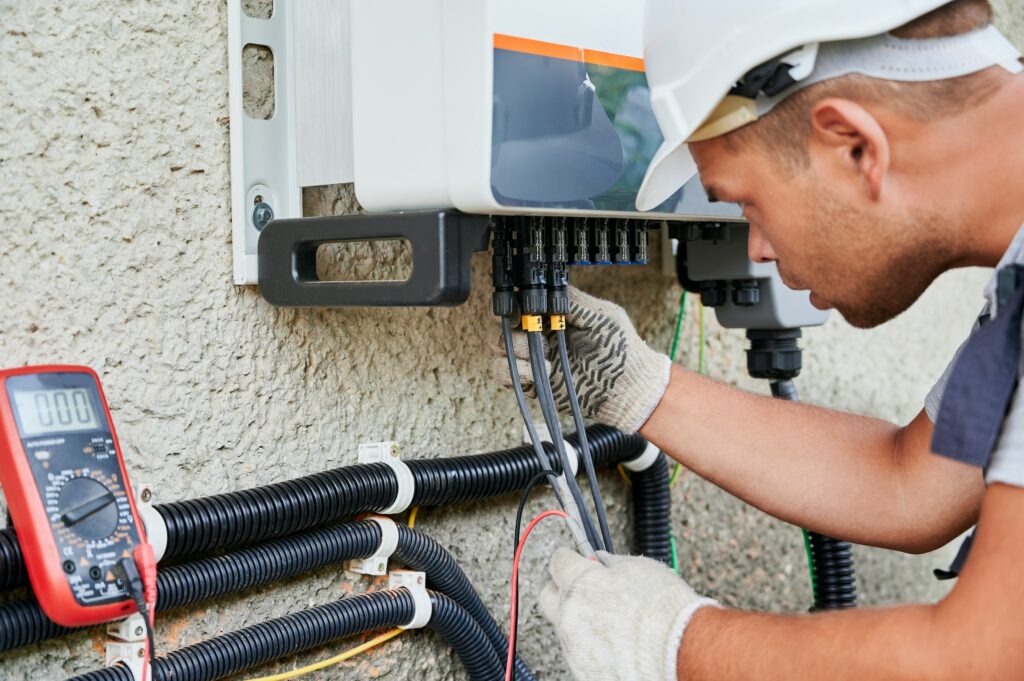Before you plunge into the sea of knowledge that awaits, let’s address the elephant in the room – why on earth should you care about parallel versus series batteries? Well, it’s not just about powering your remote control or keeping your smartphone alive.
In all their different forms, batteries are the unsung heroes underpinning our modern world. From Tesla’s electric vehicles to the renewable energy storage that’s vital for our planet’s future, the humble battery packs a serious punch.

Series Batteries: The Power Boosters
Let’s take a moment to meet our first contestant in this electrifying showdown, the series batteries. These are the “Power Rangers” of the battery world – individually, they’re just ordinary batteries, but together, they morph into a force to be reckoned with.
In a series connection, batteries are linked end-to-end, with the positive terminal of one connected to the negative terminal of the next. It is akin to a high-stakes relay race, where the baton of electric charge is passed from one battery to the next. The end result? A significant boost in voltage, while the capacity, also known as ampere-hours, remains the same.
Parallel Batteries: The Long-Lasters
Enter the parallel batteries – the “Marathon Runners” in this race. They might not pack the same initial punch as their series counterparts, but they have stamina.
In a parallel connection, the positive terminals, as are the negative ones, are all connected together. It is like a choir of batteries, where each member contributes their voice to create a harmonious, lasting output. The result? The voltage remains the same, but the capacity – the battery’s longevity – greatly increases.
Parallel versus Series Batteries: The Showdown
Are you ready for the big showdown? It’s time to see how our contenders fare when we pit parallel versus series batteries head-to-head.
Do you remember the Aesop’s fable about the tortoise and the hare? Well, this is different. They both have their strengths and weaknesses, and the best choice depends entirely on your needs.
Here are some power-packed statistics for you:
Voltage:
Series batteries take the lead, with a combined voltage that’s the sum of all the batteries in the series. On the other hand, parallel batteries maintain the same voltage as a single battery.
Capacity:
Parallel batteries shine here, with a combined capacity that’s the sum of all the batteries in the parallel connection. Series batteries, though, keep the same capacity as one battery.
Safety:
Series batteries could potentially have a higher risk of failure due to the ‘weakest link’ phenomenon. If one battery in the series fails, the whole chain is affected. Conversely, parallel batteries tend to be safer as each battery operates independently.
Flexibility:
Parallel batteries offer more flexibility. If one battery dies, the others can carry on singing. With series batteries, if one falls silent, the whole choir is out of tune.
Albert Einstein once said, “It’s not that I’m so smart; it’s just that I stay with problems longer.” It could well be the motto of parallel batteries – they may not have the high voltage of series batteries, but their longevity gives them a unique advantage.
Now, you might be wondering – could we have the best of both worlds? Is there a way to harness the voltage boost of series batteries and the staying power of parallel batteries? Yes, there is! The answer lies in a hybrid setup, where batteries are grouped into parallel and series configurations, thereby striking a balance between voltage and capacity.
Imagine a dream team of footballers, each with their unique strengths. One might be a speedy striker with a killer shot (that’s your series battery, with its high voltage).
At the same time, another might be a sturdy defender who’s always there when you need him (that’s your parallel battery, with its enduring capacity). They’re both invaluable; when you bring them together, they can achieve more than they could individually.
Real-Life Applications of Parallel and Series Batteries
To bring this discussion to life, let’s look at some real-world examples:
- Alarm Clock: This everyday device often uses batteries connected in parallel. The alarm is a motor that rings a physical bell, using significant battery juice. Using two AA cells instead of one, the clock can run longer, ensuring you never miss that crucial morning meeting.
- Camping Lantern: A camping lantern can run on four or eight D cells arranged in one or two strings of four series cells each. The lantern can run twice as long using all eight slots, ensuring you’re not left in the dark halfway through your camping adventure.
- Smoke Detectors: A common household safety device, the smoke detector, often uses a 9-volt battery. This battery is, in fact, a compact arrangement of six 1.5-volt cells connected in series, providing the required voltage in a small package.
- Uninterruptable Power Supplies (UPS): These devices, vital for maintaining power to essential systems during outages, often combine series and parallel configurations. It allows them to meet both voltage and load requirements, ensuring the connected systems run smoothly.
Remember, the choice between parallel and series batteries depends on your needs. If you simply need more voltage, go for a series connection. But if you’re after more current or capacity, a parallel setup or a bigger battery might be your best bet.
So, Which is Better: Parallel or Series Batteries?
Ah, the million-dollar question. But it’s like asking, “Which is better, pizza or ice cream?” Both have their merits and their time and place. In the world of batteries, it’s not about superiority but about suitability. What’s the voltage requirement of your device? How long do you need it to run? Answer these questions, and you’ll have your winner.
Frequently Asked Questions:
What are the advantages of battery parallel and series?
Harnessing the power of batteries in parallel or series unlocks strategic advantages. By linking batteries in series, we can boost the voltage, which is ideal for running high-voltage devices but retaining the same capacity.
Conversely, arranging batteries in parallel elevates the overall capacity, or ‘battery life’, while keeping the voltage constant. This configuration supports devices that require prolonged usage at a consistent voltage. It’s like having a larger fuel tank.
Hence, the choice between parallel or series connections is guided by the need – high voltage or long-lasting power. Either way, both configurations present a unique advantage for certain applications.
The Conclusion:
In conclusion, the choice between connecting batteries in parallel versus in series is a tale as old as time. It boils down to the requirements of your device and the trade-off between voltage and current.
Remember, a parallel connection boosts the current while maintaining voltage, and a series connection enhances the voltage at the expense of the current. It’s like choosing between a sumo wrestler and a sprinter.
One has raw power (current), and the other is swift (voltage). But in the end, the decision lies in your hands. Are you looking for a marathon runner (extended power capacity), or do you need a sprinter who can quickly cover a short distance but with a high voltage?
Whatever the case, understanding the difference between parallel and series connections is a “powerful” tool in your hands. Now, go forth and “connect” with your devices in a whole new way. It’s your turn to put this knowledge into practice. How will you connect your batteries?









